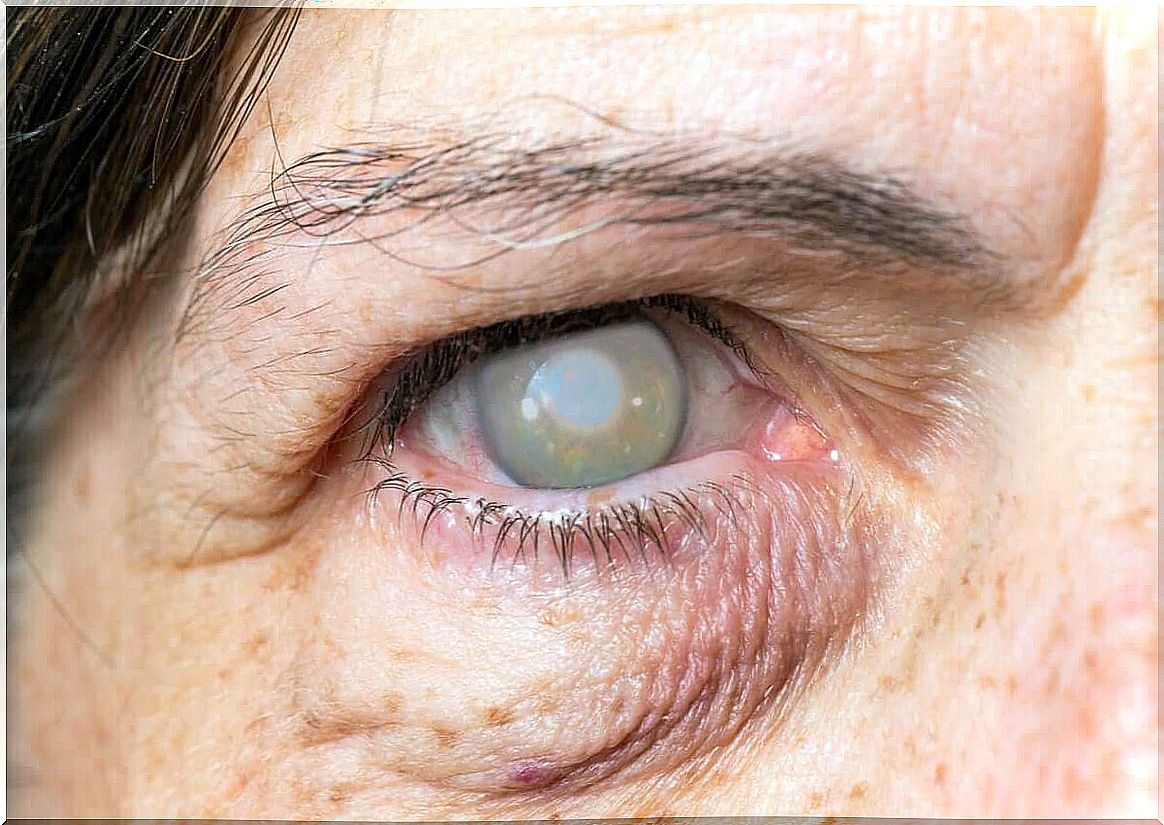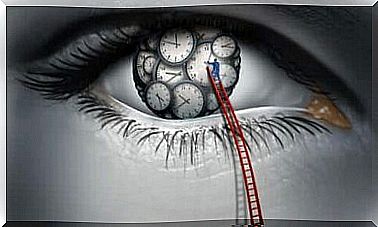Causes And Symptoms Of Vision Loss

There is no doubt about it, sight is one of the senses we depend on the most. Therefore, vision loss represents a serious problem that changes your life dramatically. Do you want to discover the causes and symptoms of this problem? Keep reading as we explain it all!
First , at least one of the functions involved in vision must be affected in order for there to be a reduction in visual acuity. In this sense, partial or total blindness will occur when there is a problem with the cornea, lens, retina or optic nerve.
Causes of partial vision loss
When we talk about partial blindness, we are talking about those people who, despite having significantly reduced their visual acuity, are still able to distinguish between certain shapes, lights and shadows. Therefore, it is not a complete sensory loss, but individuals can no longer depend on their vision as most people do.
Depending on the cause, this type of blindness can be chronic or acute. Let’s look at the most common causes of partial vision loss.

Corneal damage
Any damage caused to the surface of a tissue will generate a scar and the cornea is no exception. This scar eliminates the transparency of the cornea, which prevents light from reaching the retina. This results in a significant reduction in visual acuity.
Damage to the cornea can have a variety of causes, from severe infections to direct trauma. Any stimulus that can damage the cells in the cornea to a significant depth will be able to generate partial blindness.
The affected field of view will vary depending on the location and size of the scar. In this sense, there is no specific presentation pattern. However, the following symptoms may occur:
- blurred vision, or an area of black or opaque vision
- pain, the affected eye itches
- watery eyes
- red spots
- grainy feeling, the feeling of having something in the eye
Cataracts
Another common cause of partial blindness is cataracts. These are opacities in the lens, which are the most important refraction agent for the eye. This opacity prevents the light from reaching the retina properly, thus generating partial vision loss.
In most cases, they appear due to degeneration of the lens or due to some form of lesion in the same. According to various studies, cataracts represent the cause of 47.8% of cases of blindness in older adults.
Among the most common symptoms reported by people with cataracts are blurred, opaque or hazy vision, faded colors and inability to see well at night. They can also be lights that look very strong or have a halo around them, as well as double vision.
Retinal problems
The retina is the part of the eye that is responsible for translating light signals sent through the lens that the brain is to process. So, naturally enough, any damage to it can generate vision loss.
In most cases , defective capillaries cause problems in the retina. These defective capillaries filter fluid into the tissue. Thus, among the most common causes, we can find the following:
- diabetic retinopathy
- obstruction of arteries or veins in the eye
- a rift in the retina
- partial retinal detachment
- hypertensive retinopathy
On the other hand, there is another type of lesion in the retina that is not related to the presence of fluids. An example of this is macular degeneration, where the center of the retina begins to deteriorate, generating blurred vision or a blind spot in the visual field.
Finally, several types of infection caused by fungi, parasites or bacteria can seriously damage it. This is the case with ocular toxoplasmosis, very common in immunosuppressed humans.
Problems with the optic nerve
The optic nerve is responsible for transmitting all the information captured by the retina to the brain. Therefore, it is also an important part of the body’s ability to see. Problems related to this structure usually affect one or more fields of view.
In most cases , they are produced by glaucoma. This is a common disease that generates an increase in intraocular pressure that affects the nerve. In this sense, it is not able to transmit the signals properly, which makes it difficult to see.
However, there are another number of conditions that can generate partial blindness that affect the optic nerve, as is the case with optic neuritis or inflammation of the nerve. In addition, the indirect effects of cerebral vascular events (CVE) or tumors in the central nervous system affect our vision.
It is important to clarify that the symptoms of optic nerve damage can vary depending on the etiology. However, people usually present with rapid vision loss, redness in one or more fields of vision, double vision and eye pain.

Causes of complete vision loss
On the other hand, some people may also suffer from total blindness. This happens when a person is unable to distinguish either light or shadow. The situations that can cause total vision loss can be the same as those that cause partial blindness; nevertheless, at this point they are in the terminal phase.
Trauma or serious injuries
When the trauma is very severe and affects the entire cornea, the person may experience complete vision loss. One of the most common causes of this type of damage is chemical burns.
However, it is not only corneal damage that is able to affect visual acuity. An injury to the head or eyeball, whether penetrating or dull, can damage the optic nerve and retina.
Complete retinal detachment
We have mentioned partial retinal detachment as a cause of partial blindness. If not treated in time, however, it can develop and become a total retinal detachment, which will prevent any kind of vision whatsoever.
In most cases, it occurs due to the presence of fluid in the back of the retina. This separates the tissue in the eyeball, and interrupts the blood supply, which can cause ischemia and area death.
Although it may be asymptomatic and painless at first, some people may experience the following symptoms:
- spots appear in the eyes
- sudden light in all fields of view
- blurred vision
- sudden loss of peripheral vision and then central vision
Proliferative diabetic retinopathy
Diabetic retinopathy is one of the complications of diabetes mellitus. It affects the capillaries in the retina that filter fluid into the retina and promote lipid leakage. In addition, it can block some healthy blood vessels.
In the initial stages of the disease, partial blindness may occur. However, if nothing is done to prevent it from developing, it causes complete vision loss. This is because in the last phase, new blood vessels with very thin walls are generated to try to moisturize the tissue properly. These new capillaries tend to rupture spontaneously and generate retinal bleeding.
Endophthalmitis
A rare cause of vision loss is endophthalmitis. This is an infection of the eye and should always be considered as a medical emergency.
External microorganisms can enter the eye after eye surgery or injury and cause this infection. However, it can also be caused by an internal septic infection that has affected the eye.
Symptoms of people with endophthalmitis include severe eye pain with redness of the eyes and the production of a yellow, white or purulent secretion inside the eyeball. The eyelids also become inflamed.
Vascular occlusion
All blood vessels in the body tend to be blocked. When blockages occur in the blood vessels in the retina or optic nerve, the individual experiences a pain-free vision loss.
If the affected blood vessel is the central artery in the retina or optic nerve, there will be an inadequate blood supply to the tissue. This will result in insufficient supply of oxygen, which can cause it to inflate and become permanently damaged.
On the other hand, when it affects the central vein of the retina, there will not be adequate blood drainage. This will lead to edema, that is, excessive accumulation of fluid in the tissue, which will lead to blindness.

When should I see a doctor for vision loss?
Loss of vision, in whole or in part, should always be considered a medical emergency. On many occasions it can be painless and temporary. However, the pain does not indicate that it is less severe and therefore it should never be ignored.
For this reason , going to a specialist as soon as possible is the key so that they can perform relevant examinations and arrive at an accurate diagnosis. Many of the causes give only a short period before the damage is irreversible.
It is important to clarify that when vision loss cannot be reversed, a change in lifestyle is required. Fortunately, today there are many ways that visually impaired people can perform their daily activities without any problems.









